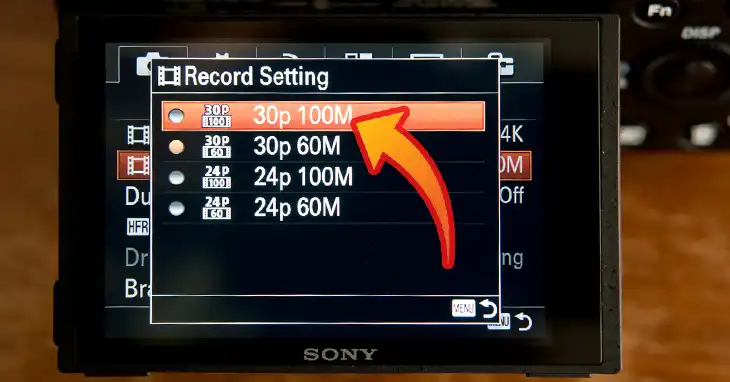So, I was playing around with my camera settings the other day, trying to get that crystal-clear video for my latest travel vlog, and I came across this thing called 30p 100M. Huh? What does that even mean? Intrigued (and maybe a little frustrated), I decided to dig deeper. Turns out, there’s a whole world hidden behind these seemingly random letters and numbers. And guess what? It has something to do with how smooth and awesome my videos can look! Let’s crack open the mystery of 30p 100M, shall we?

Breakdown of 30p 100M Camera’s Video Setting
Let’s crack the code behind 30p 100M. This seemingly cryptic combination actually refers to two crucial video recording settings: frame rate and bitrate. Understanding these will help you to make informed decisions when capturing those precious moments.
What does 30p Stand for?
Let’s start with the “30p” part. In plain English, it indicates the frame rate of your video recording, which stands for 30 frames per second (fps). Now, what exactly does that mean, you ask?
Imagine a video as a series of individual images, like a flipbook. The frame rate determines how many of these images are captured and displayed every second. The more frames per second, the smoother and more lifelike the motion appears on your screen.
A higher frame rate can also make fast-moving subjects look clearer and less blurry. For instance, if you’re filming a soccer match or a bird in flight, a higher frame rate can help capture those swift movements more accurately.
30 fps is a widely used frame rate for many video recordings because it strikes a nice balance between smoothness and file size. It’s common for broadcast TV, online videos, and even some feature films.
What does 100M Stand for?
Moving on to the “100M” part of the setting, this refers to the bitrate, which is measured in megabits per second (Mbps). But what exactly is a bitrate, you might wonder?
Think of the bitrate as the amount of data used to encode each second of your video footage. A higher bitrate means more data is used to represent the video, resulting in better quality but larger file sizes.
100 Mbps is considered a relatively high bitrate, especially for consumer-level cameras. It allows for more detail and less compression in your video files, leading to better overall quality. However, this comes at the cost of larger file sizes, so you’ll need ample storage space on your memory cards or hard drives.
How 30p and 100m Work Together
Now that you understand the individual components, let’s see how 30p and 100M work together. In simpler terms, 30p 100M is a recording setting typically found on Sony cameras. It captures video in stunning 4K resolution (3840 x 2160 pixels) at a smooth 30 frames per second. Additionally, the high bitrate of 100 Mbps ensures excellent video quality with sharp details and minimal compression.
Here’s a heads-up, though: all that high-quality goodness comes at a price – storage space. A 1.15-hour video recorded at 30p 100M can gobble up a whopping 64 GB! So, make sure you have enough storage space before hitting that record button.
FAQs
Is 30p 100M overkill for everyday videos?
For many everyday videos, like capturing family gatherings or vlogs, 30p 100M might be more than you need. You can achieve good quality with a lower bitrate (around 50 Mbps) while maintaining a smooth frame rate. This will save you valuable storage space.
What are some alternative frame rates to consider?
While 30 fps is a popular choice, there are other options depending on your needs. For a more cinematic look, try 24 fps, which mimics classic films but might appear less smooth for fast-paced action. If you’re capturing fast-moving subjects or action sports, 60 fps creates a more fluid and realistic experience, but be prepared for even larger file sizes.
Should I always use the highest bitrate available on my camera?
Not necessarily. The highest bitrate might not always be the best choice. Consider your editing software’s capabilities – some might struggle with very high bitrate footage. Additionally, if you plan to share your video online on platforms with specific upload limitations, you might need to adjust the bitrate accordingly.
Are there any downsides to using a lower frame rate?
Yes, there are some trade-offs when using a lower frame rate. Lower frame rates (like 24 fps) can make fast-moving scenes appear choppy or jerky compared to higher frame rates. Additionally, rapid movements might appear blurry with lower frame rates due to fewer frames capturing the action.
Bottom Line
Alright, that’s all I could dig up about 30p 100M and those video settings! My head is spinning a little, but in a good way! Feeling much more confident about filming my next project. If you guys have any other weird camera settings you’ve stumbled upon, let me know in the comments! Maybe we can figure them out together. Happy filming, everyone!
